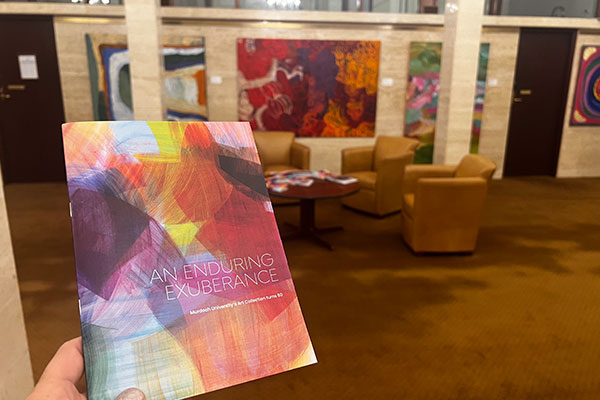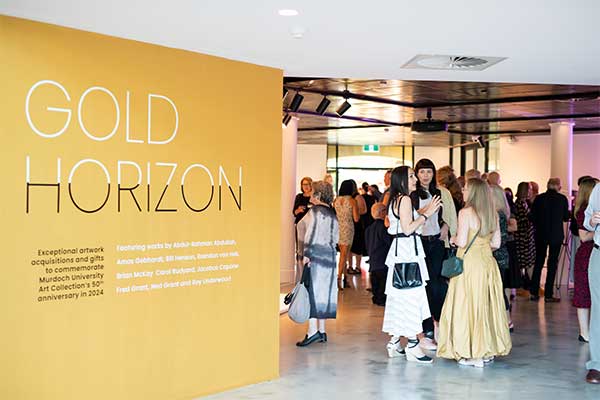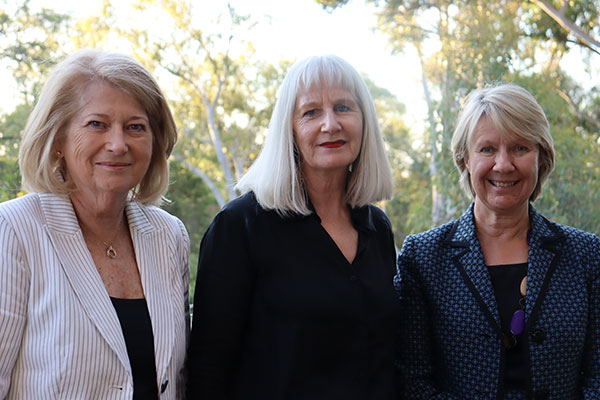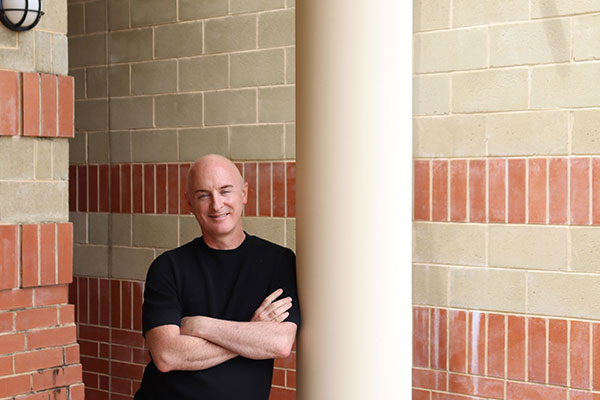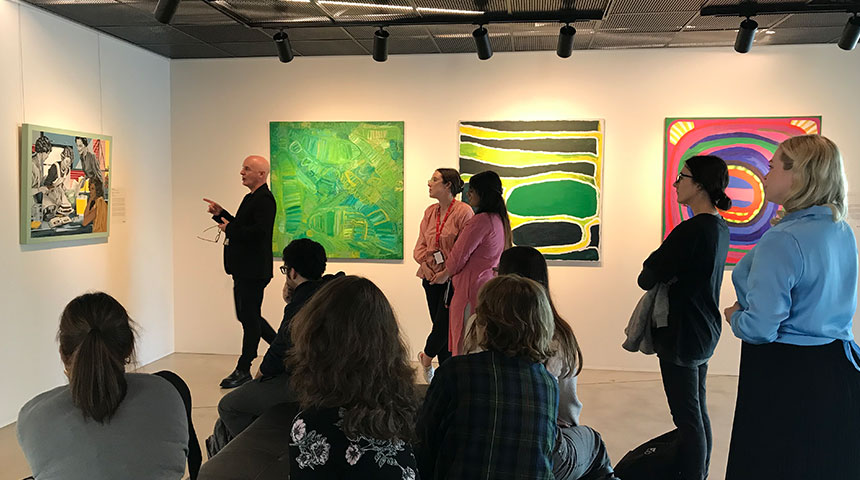
One of the rewards of working at Murdoch is the integration of the University art collection across campus to challenge, engage and inspire our students, staff and visitors.
The unit is harnessing the Murdoch University Art Collection to help students gain an understanding of how they can read and interpret visual evidence, and appreciate how art, architecture and artefacts enrich our understanding of the past.
With the support of Art Curator Mark Stewart and Assistant Art Curator Dr Baige Zylstra, Elizabeth selected five artworks by celebrated Australian artists for the unit: Christopher Pease’s Beeliar Boodja Bidi, which was specifically commissioned for Boola Katitjin, and four works in the Art Gallery: Sandra Hill’s Homemaker # 7 – Cake Making; The Huxleys’ Where Have All The Flowers Gone; Tony Albert’s You Wreck Me # 34; and Atong Atem’s I Have Two Of Everything.

Assistant Art Curator Dr Baige Zylstra and students at the Christopher Pease artwork in Boola Katitjin.
“Similar to the textual sources that we are perhaps more familiar with in history units, art is embedded with meaning and knowledge,” Elizabeth said.
“For students, recognising how you can read, interpret and make use of art to better understand our past can reveal a world of new sources and insights. This approach can feel empowering for a curious student, and it can also deepen their love and appreciation of art.
Mark Stewart said the Art Collection has acquired artworks featuring narratives reflective of the University’s Strategic themes of Sustainability; Equity, Diversity, and Inclusion; and First Nations for almost 50 years. He noted that the group of artworks selected for inclusion in Elizabeth’s unit perfectly supported these themes.
“We’ve always encouraged academic staff to access the Art Collection and assist them in utilising artworks as a teaching and learning tool within their syllabus,” Mark said. “We’re excited that the rich content of our Art Collection can support curriculum and the broader University Strategy.”
We caught up with Dr Burns-Dans (shown below) to throw a little more light on her development of this engaging unit.

What was the initial spark that led to you creating the Visual Evidence and the Art of History unit?
This led myself and a colleague, Prof. Deborah Gare, to design the Visual Evidence and the Art of History unit. The unit is intended to introduce students to the rich and complex stories that visual evidence can give us, and how we can best utilise visuals in historical research.
A major theme that we draw upon throughout the unit comes from a quote by literary critic and historian Hayden White, who says: “A simply true account of the world based on what the documentary record permits one to talk about…can provide knowledge of only a very small portion of what ‘reality’ consists of. However, the rest of the real, after we have said what we can assert to be true about it, would not be everything we could imagine about it.”
I have received some fantastic feedback from students. An aspect of the unit that was particularly well received was how often we got out of the classroom and how many guests joined us throughout the semester. We visited the Murdoch University Art Collection twice during semester and were lucky enough to speak with Mark and Baige on a number of occasions.
We were given a tour of the South Street campus architecture by Prof. Deborah Gare. Dr Dean Aszkielowicz delivered a guest lecture on the history of protest and street art, and we visited the Art Gallery of Western Australia as a group to view the current Antipodeans exhibition with Helen Wildy, Murdoch’s DVC Student Services.
I would love to continue working closely with Murdoch University Art Collection, not just in this subject but in other humanities units too. The visual arts provide such diverse learning opportunities for students, and I hope to continue tapping into those experiences. We are hoping to expand our engagement with the Art Collection in helping us to co-design a new unit that focuses on the value of art in the context of protest, social justice and community building.


